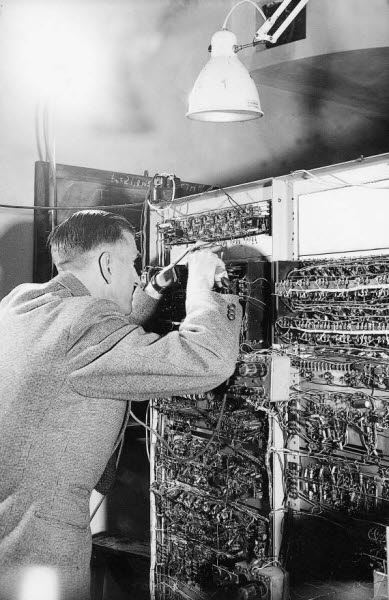
|
|
Thomas Hysing, the father of Nusse, works on the innards of the technological wonder. Photo: SINTEF |
In 1950, work on Nusse, the first electronic computer to be built in Norway, began at the University of Oslo. The initiative was taken by the “Mathematics Machine Committee” of NTNF (The Royal Norwegian Council for Scientific and Industrial Research).
The efforts were led by NTH engineer Thomas Hysing (1917 – 2010). At first, he was appointed to the NTNF committee, then to SI (now SINTEF in Oslo), where the development process started.
The committee went in for a valve-based electronic computer. Everything from the electronic circuits to the control panel had to be built from scratch, since electronics were still incredibly primitive in the early 1950s.
Transferred to SI
In 1951, work on Nusse was transferred, in organisational terms, from UiO to SI. The machine was ready for use in 1954.
“This is the fastest computer in this country, although it is slow in comparison with much more expensive systems in other countries,” pointed out SI’s 1953 Annual Report.
The machine found a wide range of scientific applications, both for technical calculations for other SI projects and for external users.
Famous users
Two Nobel Prizewinners used the machine.
- Ragnar Frisch used it to solve econometric equations. Econometrics lies at the interface between economics – particularly social economics – and statistics.
- Odd Hassel needed it to supply computing power for his research in crystallography.
Subsequently, calculations of vessel stability became an important task for Nusse. The acronym stands for “Norsk universal siffermaskin, sekvensstyrt, electronisk”: (Norwegian sequentially controlled universal electronic numerical machine).
Source: Jon Gulowsen: “Bro mellom vitenskap og teknologi” (Bridge between science and technology): Tapir (SINTEF Anniversary volume 1950 – 2000).
